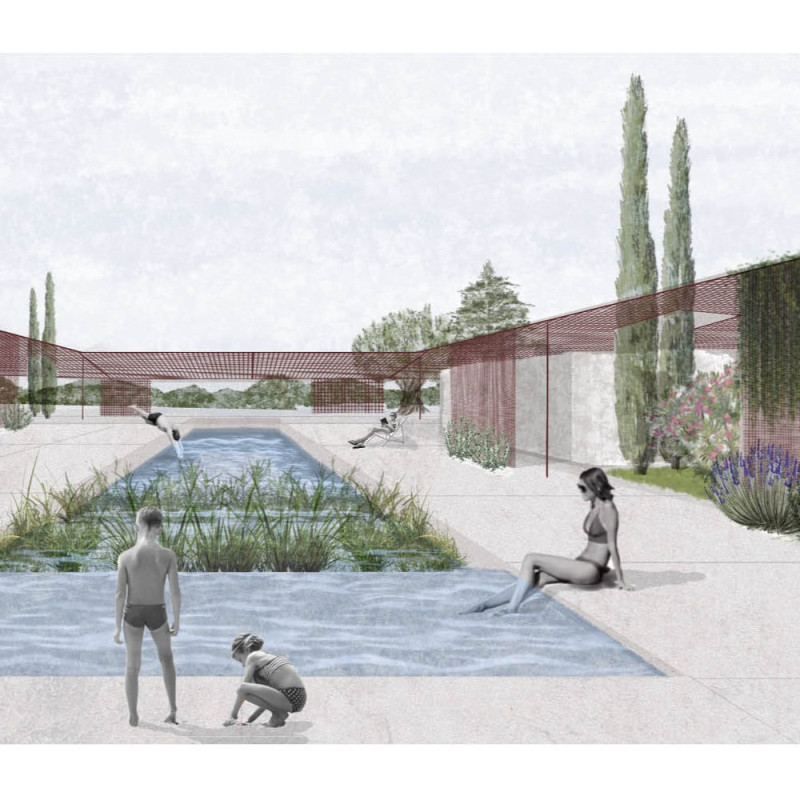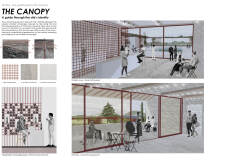5 key facts about this project
The Tili Wine project is located in the scenic Umbrian region of Italy, comprising five guesthouses and a main building. The design aims to connect the architecture with its natural surroundings, creating a modern interpretation of traditional Umbrian styles. It emphasizes natural light and panoramic views of the vineyards and hills, enhancing the visitor experience through careful spatial organization.
Design Concept and Structure
The project focuses on the relationship between indoor and outdoor spaces. Adjustments to the southern façade of the main building include large curtain walls that let in plenty of natural light while framing stunning views of the landscape. This design choice strengthens visual links and enhances the experience for guests, allowing them to feel at one with the environment.
Delineation of Spaces
A key feature of the project is the large steel sunshade that surrounds the main building. This element protects from direct sunlight and improves sightlines toward the vineyards and hills. The placement of the five guesthouses around a natural pool creates a unified outdoor area, encouraging exploration throughout the property. Each guesthouse is designed to maximize light and views, promoting interaction with the landscape.
Landscape Integration
The outdoor design includes a variety of native plants, such as pine trees, cypress, oleander, olive trees, lavender, and rosemary. These plants are placed thoughtfully to provide shade while also responding to the light, enhancing the experience of the guesthouses. This careful consideration of the local environment shows an understanding of the site, contributing to an engaging experience for visitors.
Material Selection
Weather-resistant steel is used for the sunshade, ensuring durability and longevity in changing weather. The perforated steel components allow light to filter through while maintaining strength, adding to the overall appearance of the design. This choice of materials shows a commitment to blending the architecture with the characteristics of the Umbrian landscape.
The way light and shadow interact across the guesthouses offers a unique visual experience throughout the day, encouraging guests to engage with their surroundings in different ways.






















































